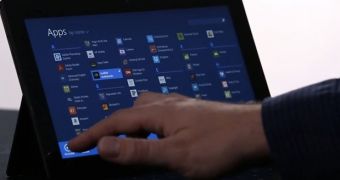Microsoft has already confirmed that Windows 8.1 is projected to see daylight on October 18, so the first Windows 8 update is supposed to be here in only 60 days.
As you probably heard by now, Windows 8.1 isn’t considered a regular service pack, but a major update for the existing modern OS, bringing quite a lot of changes developed to make the operating system a much more familiar working environment.
Microsoft claims that Windows 8.1 is the living proof that it’s really listening to customer feedback, hence the Start button will return in the next Windows release.
But even though users have asked for the “old” Start button, which also includes a Start Menu, Microsoft continues to bet big on the Start screen, so the revamped feature does nothing more than to take users to the Metro UI.
At the same time, Windows 8.1 packs improvements for the Start screen too, including new customization options, backgrounds, live tile sizes, and support for the desktop wallpaper.
Users are finally allowed to configure the operating system to boost directly to desktop and thus skip the Modern UI completely, but a dedicated option to disable the Start button and stick to the old Windows 8 interface is still missing.
The Softies expect Windows 8.1 to boost adoption of its modern OS, as Windows 8 has only managed to reach a 5 percent market share in more than six months on the market. What’s more, the company hopes Windows 8.1 to spawn a new wave of devices, including smaller tablets and hybrids specifically built for the touch.
Windows 8.1 is set to go live on October 18, but Windows 8 users will be allowed to download it from a Store one day earlier. MSDN and TechNet subscribers are likely to get it at about the same time, as Microsoft wants to continue work on the OS after it hits RTM.

 14 DAY TRIAL //
14 DAY TRIAL //